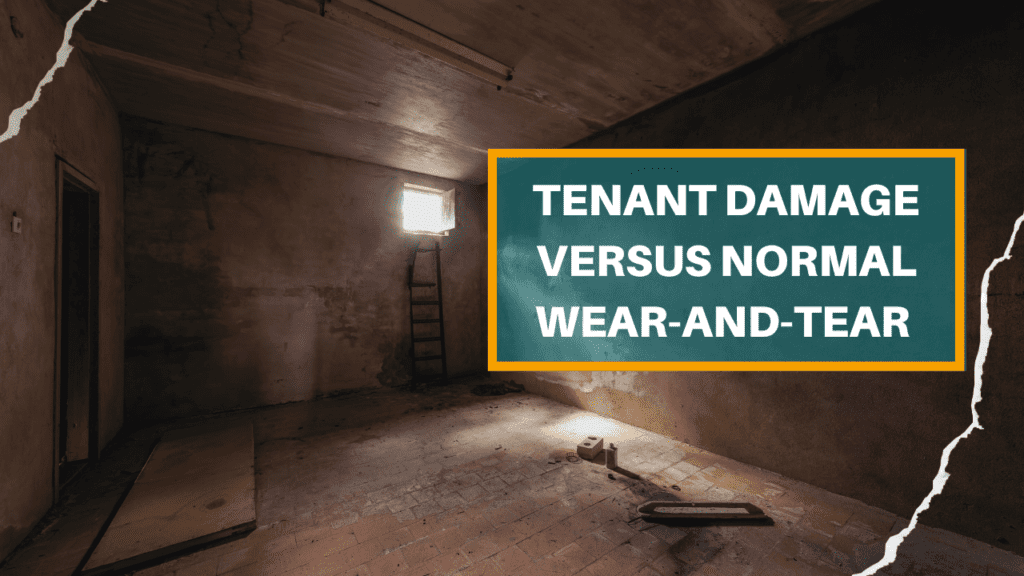
Determining the difference between normal wear and tear and tenant damage can often be subjective.
That’s a problem for a lot of landlords who aren’t sure whether they should make a deduction from a tenant’s security deposit. You don’t want to deduct unless you know for sure that it’s damage. Normal wear and tear items are your responsibility to fix as the property owner.
Wear and tear is the expected deterioration of a property that happens over time, regardless of who is living there.
Damage, of course, is different.
How do you know if you’re looking at tenant damage or normal wear and tear?
Our experience providing property management services in Albuquerque might help. Here’s what we consider when we’re making decisions about the security deposit at the end of a lease term.
Understanding What Tenant Damage Looks Like
Damages can be identified as any abuse, neglect, or misuse of the property that’s caused by the tenant or the tenant’s guests. It could be accidental (usually, it is with otherwise good tenants), or they could destroy something on purpose.
Some of the most common tenant damages include:
- Broken windows and doors or damaged and bent window screens
- Large holes in the walls, often from televisions that were mounted
- Cuts and gashes on countertops
- Large stains or holes in carpets
- Overgrown or destroyed landscaping from lack of attention and care or pets
- Appliances that have been misused and are therefore broken
- Disabled smoke detectors
If a tenant doesn’t report a dripping faucet or a clogged drain and this leads to a major plumbing problem, it can turn into damage.
Identifying Normal Wear and Tear in Albuquerque Rental Homes
Normal wear-and-tear is not the same as damage.
Every home is going to have some wear and tear as time goes on. This happens to the property you live in yourself. If a carpet has been in the home for five years or more, you’ll probably need to replace it, regardless of the condition the tenant left it in. Paint will fade, especially on walls that face windows with a lot of sunlight.
Make sure you pro-rate any repairs or replacements when it comes to carpets and paint.
Small nail holes in the walls from where a tenant hung pictures is considered wear and tear. Scuff marks on the walls or the floors from where furniture rests can also be considered wear and tear. Loose door handles and hinges are going to happen.
Avoiding Disputes about Damage vs. Wear and Tear
 We always want to protect the condition of your property and minimize what you have to spend during turnovers, but generally, we recommend that you give the tenant the benefit of the doubt unless the damage is obvious.
We always want to protect the condition of your property and minimize what you have to spend during turnovers, but generally, we recommend that you give the tenant the benefit of the doubt unless the damage is obvious.
If a conflict arises, try to work it out with the tenant so you don’t find yourself in court. Make sure you accurately and thoroughly document the condition of the property during your move-in inspection and your move-out inspection. You should be able to make a clear and accurate comparison. It’s also a good idea to include as much information as possible in the lease agreement so tenants will know what you expect in terms of property condition when they move out.
If you have any further questions about the difference between damage and normal wear and tear, we invite you to contact us. For help with property management services in Albuquerque, please contact us at Bruni Karr Agency.
